 W
W180 lines is an early electronic television system. It was used in Germany after on March 22, 1935, using telecine transmission of film, intermediate film system, or cameras using the Nipkow disk. Simultaneously, fully electronic transmissions using cameras based on the iconoscope began on January 15, 1936 with a definition of 375 lines.
 W
WIn television electronics, A-MAC carries digital information: sound, and data-teletext on an FM subcarrier at 7 MHz. Since the vision bandwidth of a standard MAC signal is 8.4 MHz, the horizontal resolution on A-MAC has to be reduced to make room for the 7 MHz carrier. A-MAC has not been used in service.
 W
WThe Advanced Television Systems Committee (ATSC) is an international, nonprofit organization developing technical standards for digital terrestrial television and data broadcasting. ATSC's 120-plus member organizations represent the broadcast, broadcast equipment, motion picture, consumer electronics, computer, cable, satellite and semiconductor industries.
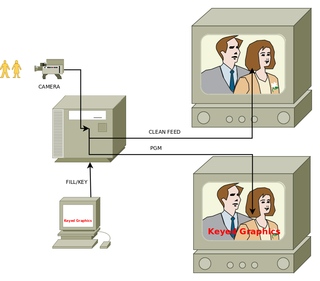 W
WIn television technology, a clean feed is a video signal that does not have added graphics and text. This video signal is used in sport production to allow different television stations to add their own digital on-screen graphic image on a common signal, or in news broadcasting to produce two or more different streams, each one with the same picture but in different languages.
 W
WA conditional access module (CAM) is an electronic device, usually incorporating a slot for a smart card, which equips an Integrated Digital Television or set-top box with the appropriate hardware facility to view conditional access content that has been encrypted using a conditional access system. They are normally used with direct-broadcast satellite (DBS) services, although digital terrestrial pay TV suppliers also use CAMs. PC Card form factor is used as the Common Interface form of Conditional Access Modules for DVB broadcasts. Major CAM manufacturers include: Neotion, SmarDTV & SMIT.
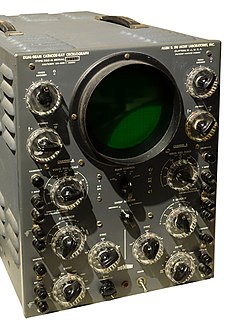 W
WAllen B. DuMont Laboratories, Inc. was an American television equipment manufacturer and broadcasting company. At one point it owned TV stations WABD, KCTY, W2XVT, KE2XDR, & WDTV, as well as WTTG, all former affiliates of its defunct DuMont Television Network.
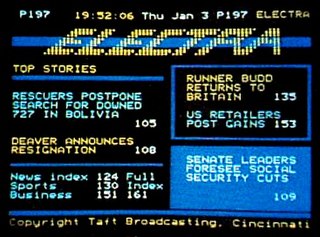 W
WElectra was a teletext service in the United States that was in operation from the early 1980s up until 1993, when it was shut down due to a lack of funding, and discontinuation of teletext-capable television sets by the only US television manufacturer offering teletext capability at the time, Zenith. It was owned, operated and maintained by Cincinnati-based Taft Broadcasting and Tulsa, Oklahoma-based Satellite Syndicated Systems (SSS), in cooperation with cable/satellite TV station Superstation WTBS, who carried Electra's data on their vertical blanking interval. SSS's own TV network, the Satellite Program Network, carried the service before it was shut down in 1989. The service was also available to C-band satellite dish users via the Galaxy 1 and Satcom 3R satellites.
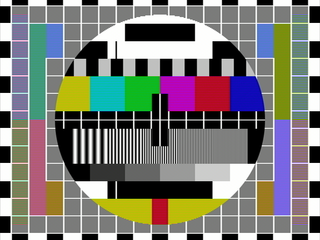 W
WHanover bars, in one of the PAL television video formats, are an undesirable visual artifact in the reception of a television image. The name Hanover refers to the city (Hannover) in which the PAL system developer Telefunken Fernseh und Rundfunk GmbH was located.
 W
WAn integrated reception system (IRS) provides broadcast signals from multiple sources to multiple outlets, via a single aerial cluster and signal booster-distributor. The most obvious use for such a system is in communal housing blocks, where one aerial cluster can replace many aerials serving individual dwellings. The predecessor to IRS was MATV- master aerial television- which provided communal housing with terrestrial TV signals only. Because the booster-distributor boxes within such systems usually need replacing to cope with digital terrestrial TV signals, many landlords are opting to replace the entire system with IRS at the time of digital terrestrial TV switchover, thereby reducing the clutter of satellite TV dishes which have appeared on many communal housing blocks since the 1990s.
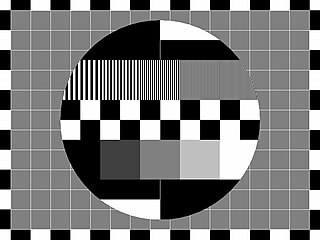 W
WThe Philips PM5540 is a test pattern generator that could be considered a black & white predecessor of the widely used Philips PM5544 test pattern. It has been used in Australia, Abu Dhabi, Denmark, Israel, Qatar and the Netherlands. A heavily modified version of the PM5540 test card was used by Sjónvarpið of Iceland from 1966 until 1982, and the latter test card was also used by some regional broadcasters of the German public broadcasting corporation ARD as well as by the national German public broadcaster ZDF.
 W
WFor televisions the picture line-up generation equipment is the greyscale test patterns used in order to adjust the black level and contrast of the picture monitor. Various PLUGE patterns can be generated, the most common consisting of three vertical bars of super-black, normal black, and near-black and two rectangles of mid-gray and white. These three PLUGE pulses are included in the SMPTE color bars used for NTSC, PAL, and SÉCAM.
 W
WIn a television studio, a tally light is a small signal-lamp on a professional video camera or monitor. It is usually located just above the lens or on the electronic viewfinder (EVF) and communicates, for the benefit of those in front of the camera as well as the camera operator, that the camera is 'live' - i.e. its signal is being used for the 'main program' at that moment.
 W
WTeleavia was an Italian manufacturer of televisions in the mid-20th century, later absorbed by Thomson SA.
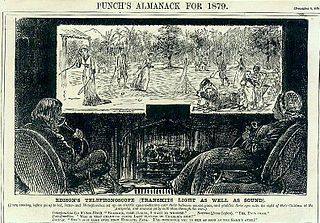 W
WA telephonoscope was an early concept of videophone and television, conceptualized in the late 1870s through the 1890s. It was mentioned in various early science fiction works such as Le Vingtième siècle. La vie électrique and other works written by Albert Robida. It was also sketched in various cartoons by George du Maurier as a fictional invention by Thomas Edison including one made on December 9, 1878 in Punch magazine.
 W
WTri-level sync is an analogue video synchronization pulse primarily used for the locking of high-definition video signals (genlock).
 W
WVariance Adaptive Quantization (VAQ) is a video encoding algorithm that was first introduced in the open source video encoder x264. According to Xvid Builds FAQ: "It's an algorithm that tries to optimally choose a quantizer for each macroblock using advanced math algorithms." It was later ported to programs which encode video content in other video standards, like MPEG-4 ASP or MPEG-2.
 W
WThe XL-100 was a line of RCA solid-state television sets that emerged in 1971 and continued into the late 1990s. The "XL" stands for extended life chassis while the 100 refers to RCA's emphasis of 100% solid-state chassis. Initially the top of the line RCA color televisions, they would become lower-end as the Colortrak and Dimensia series were introduced The original models replaced the RCA "Vista" and "New Vista" color television series.